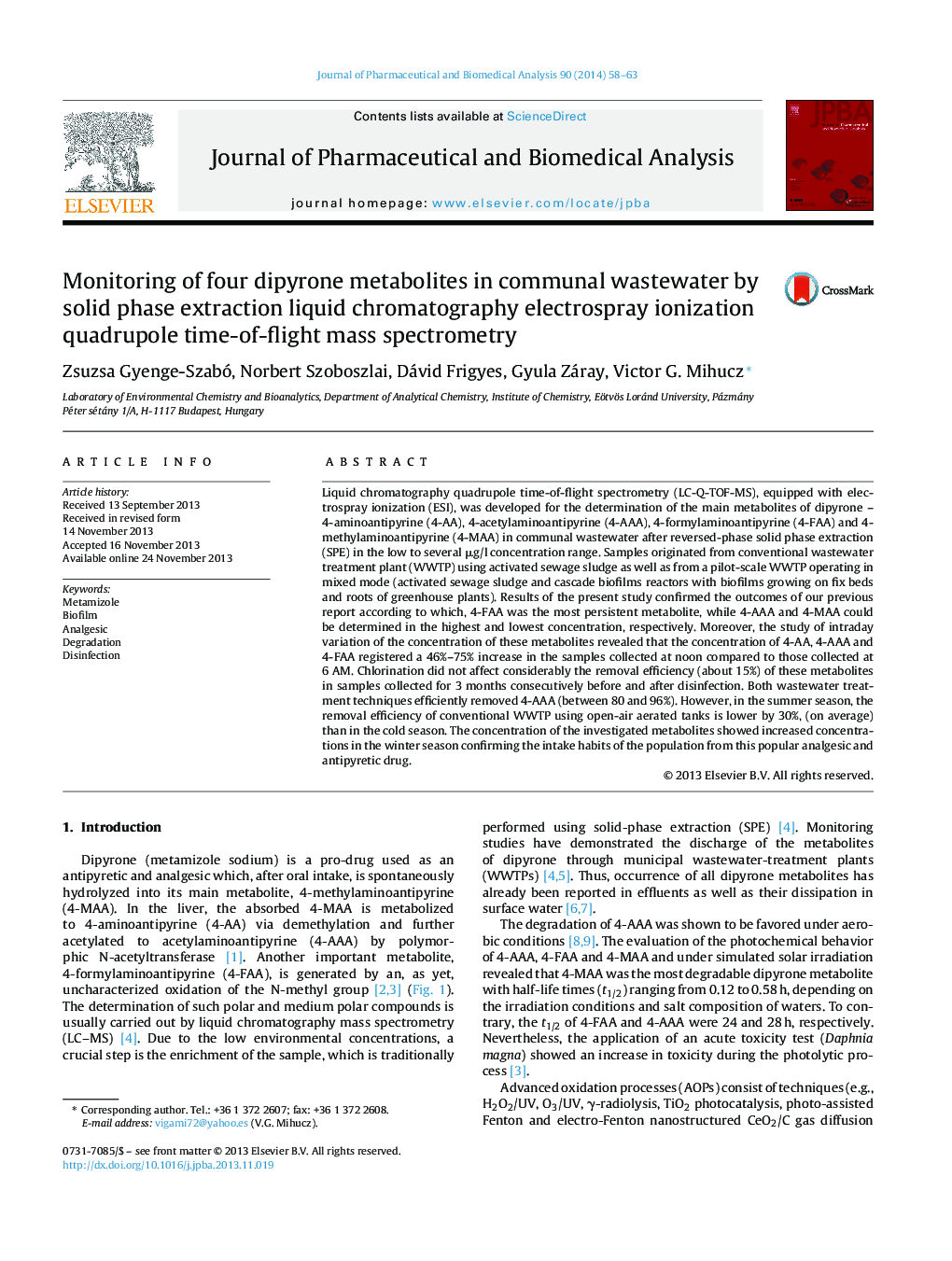| Article ID | Journal | Published Year | Pages | File Type |
|---|---|---|---|---|
| 1220685 | Journal of Pharmaceutical and Biomedical Analysis | 2014 | 6 Pages |
•Intraday variation in the concentration of dipyrone metabolites in wastewater.•No effect of chlorination on the metabolite removal.•Correlation of metabolite level in influent and pro-drug intake habit.•Temperature dependent 4-AAA removal efficiency.•Enhanced 4-AAA removal in biofilm containing wastewater treatment.
Liquid chromatography quadrupole time-of-flight spectrometry (LC-Q-TOF-MS), equipped with electrospray ionization (ESI), was developed for the determination of the main metabolites of dipyrone – 4-aminoantipyrine (4-AA), 4-acetylaminoantipyrine (4-AAA), 4-formylaminoantipyrine (4-FAA) and 4-methylaminoantipyrine (4-MAA) in communal wastewater after reversed-phase solid phase extraction (SPE) in the low to several μg/l concentration range. Samples originated from conventional wastewater treatment plant (WWTP) using activated sewage sludge as well as from a pilot-scale WWTP operating in mixed mode (activated sewage sludge and cascade biofilms reactors with biofilms growing on fix beds and roots of greenhouse plants). Results of the present study confirmed the outcomes of our previous report according to which, 4-FAA was the most persistent metabolite, while 4-AAA and 4-MAA could be determined in the highest and lowest concentration, respectively. Moreover, the study of intraday variation of the concentration of these metabolites revealed that the concentration of 4-AA, 4-AAA and 4-FAA registered a 46%–75% increase in the samples collected at noon compared to those collected at 6 AM. Chlorination did not affect considerably the removal efficiency (about 15%) of these metabolites in samples collected for 3 months consecutively before and after disinfection. Both wastewater treatment techniques efficiently removed 4-AAA (between 80 and 96%). However, in the summer season, the removal efficiency of conventional WWTP using open-air aerated tanks is lower by 30%, (on average) than in the cold season. The concentration of the investigated metabolites showed increased concentrations in the winter season confirming the intake habits of the population from this popular analgesic and antipyretic drug.
Graphical abstractFigure optionsDownload full-size imageDownload as PowerPoint slide
